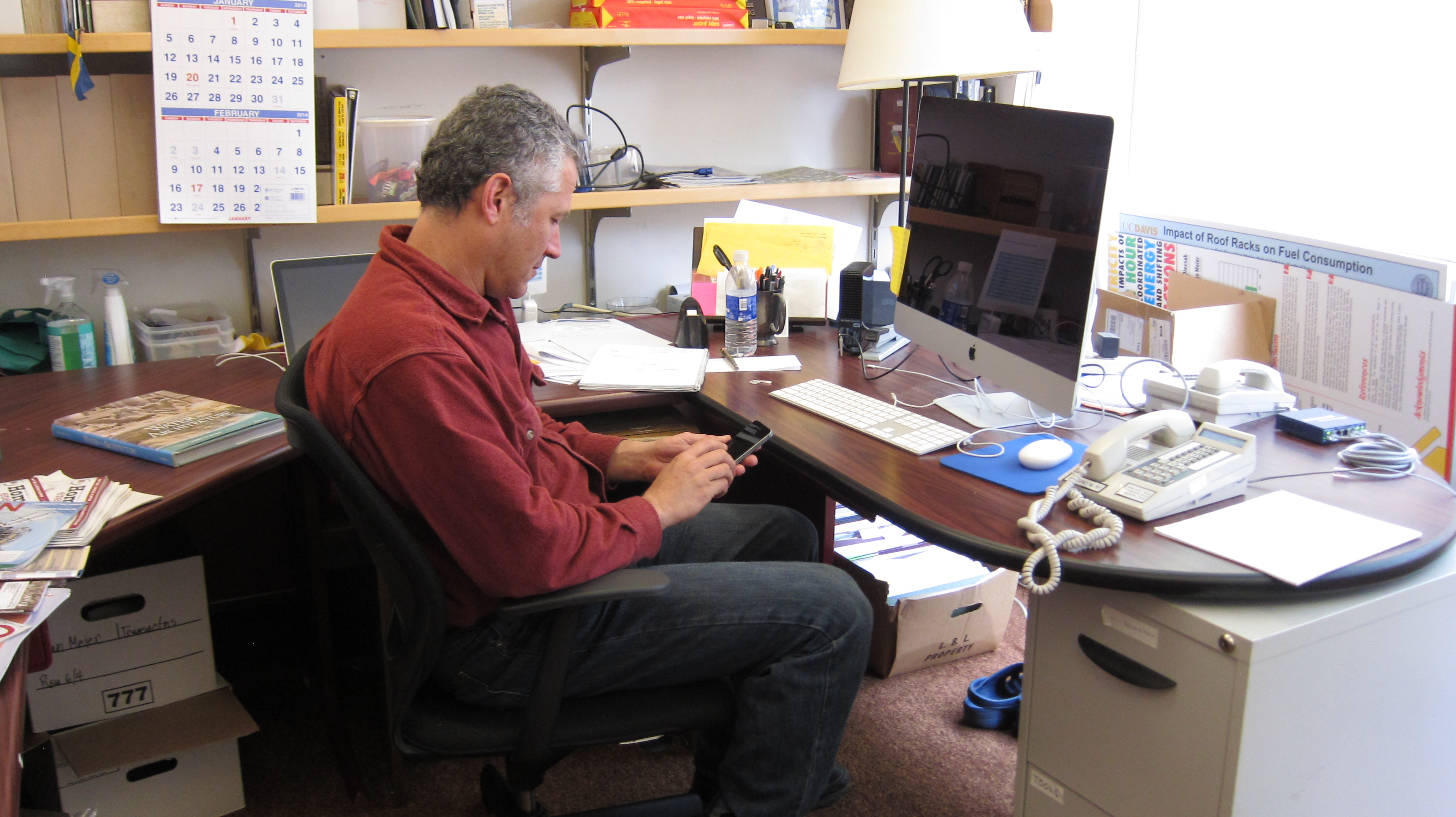When is a phone not a phone? When it’s serving as an occupancy sensor for energy-saving purposes.
Lawrence Berkeley National Laboratory (Berkeley Lab) researcher Bruce Nordman had an idea several years ago to take advantage of existing devices in office buildings by using them for energy efficiency purposes. In the United States buildings are responsible for 73 percent of electricity consumption and about 39 percent of carbon dioxide emissions.
“If a building could base its operations on people actually showing up rather than a fixed schedule, the potential for energy savings could be quite large,” Nordman said. “And if you use existing devices to sense occupancy rather than wiring a dedicated sensor and maintaining it, then it’s free—you don’t have to spend money to save energy.”
Nordman details the concept of “implicit sensing”—along with an experiment to see how accurately smartphones could provide occupancy information—in a paper titled, “Using existing network infrastructure to estimate building occupancy and control plugged-in devices in user workspaces,” published in the International Journal of Communication Networks and Distributed Systems this month. His co-authors were Ben Rosenblum of Berkeley Lab and researchers at the University of South Florida and the University of Puerto Rico.
The paper examines several ways that existing infrastructure that could be used for occupancy sensing, including calls made on telephone landlines, communications data collected by routers and Wi-Fi access points to measure the presence of smartphones and computers, and security badging systems. By knowing occupancy of not just buildings but floors and rooms, then energy usage could potentially be reduced by adjusting the use of systems such as lighting, heating and cooling.
When Nordman first came up with the idea, smartphones were still a futuristic notion. Now that they are so prevalent, and many workers carry them around, monitoring their communications with the office Wi-Fi network could be useful.
The researchers conducted experiments in a building at the University of South Florida and at Berkeley Lab to test the accuracy of smartphones for occupancy sensing. They found that mobile phones were not as accurate as infrared sensors, largely because of inconsistent Wi-Fi connectivity of phones, but the researchers anticipate that increasing numbers of users will keep Wi-Fi powered on at all times in the future.
Still, it’s free, and with some further studies, Nordman believes the idea could be feasible. Also, if the system combined occupancy data from mobile phones along with other sources, such as whether people are using their computers, accuracy would be improved. “If you have, say, five different ways to determine occupancy, you can combine the data,” he said.
And such a system would not have to be limited to office buildings. Nordman envisions the concept could be used in homes, retail buildings, airports and even cars.
Plus, Nordman says his concept includes evolving the notion of occupancy, which is a binary state, to something he calls “presence,” which encompasses how many people are in the room, who they are, and what they’re doing. “For example, depending on what’s going on in the room, lighting levels could change,” he said. “If you know what people are doing you can provide them with better energy services.”
For more on Nordman’s work visit nordman.lbl.gov.
# # #
Lawrence Berkeley National Laboratory addresses the world’s most urgent scientific challenges by advancing sustainable energy, protecting human health, creating new materials, and revealing the origin and fate of the universe. Founded in 1931, Berkeley Lab’s scientific expertise has been recognized with 13 Nobel prizes. The University of California manages Berkeley Lab for the U.S. Department of Energy’s Office of Science. For more, visit www.lbl.gov.
